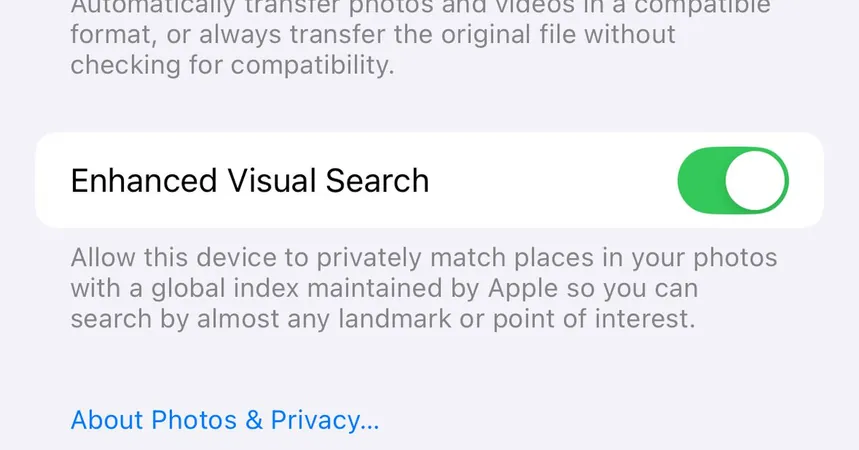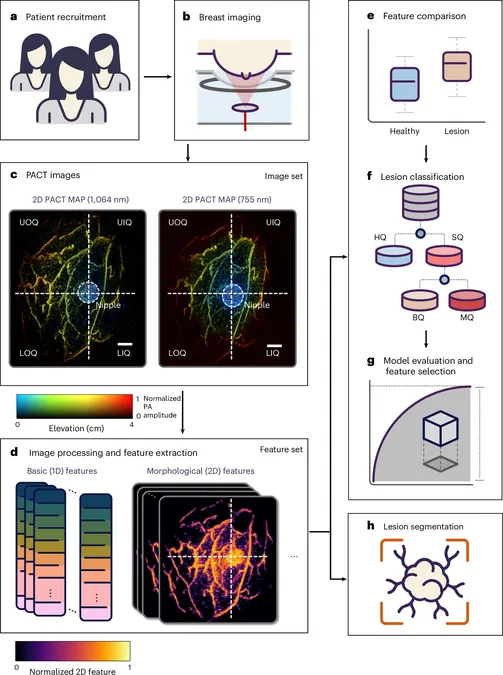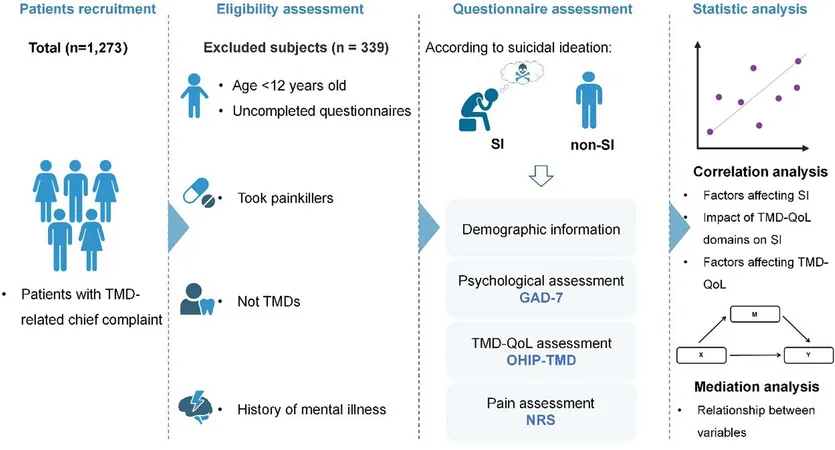
Is Your iPhone Secretly Sharing Your Photo Data with Apple? Here’s What You Need to Know!
2024-12-29
Author: Jacques
Introduction
In a move that has raised questions about privacy, Apple has introduced a new feature in the Photos app that seemingly goes against its traditionally strong privacy stance. Developer Jeff Johnson recently brought to light that the "Enhanced Visual Search" feature is activated by default on iPhones, allowing your device to share data from your photos with Apple without explicit consent.
Default Setting Confirmation
Upon checking an iPhone 15 Pro, it was confirmed that the toggle for this feature is indeed switched on by default. Users can easily locate this setting by navigating to Photos settings on their iPhone through the iOS Settings app or on a Mac via the Photos app's settings menu.
The Enhanced Visual Search Tool
The Enhanced Visual Search tool allows users to search for landmarks in their photos. For example, by swiping up on an image of a building and selecting "Look Up Landmark," a card will pop up to identify the structure. Apple initially rolled out a similar feature called Visual Look Up in iOS 15 that doesn’t require special permissions, making this new toggle particularly concerning for privacy advocates.
Privacy Concerns
The description under the Enhanced Visual Search toggle makes it clear: enabling it allows Apple to "privately match places in your photos with a global index maintained by Apple." This raises additional questions about the extent of data being shared without user knowledge.
Technical Details
According to an Apple machine-learning research blog associated with Enhanced Visual Search, the process begins with an on-device machine learning model assessing whether a photo contains a "region of interest" that may correspond to a landmark. If such a region is detected, a vector embedding is calculated and encrypted before being sent to Apple for comparison with their database of landmarks.
While technical details about vector embeddings can be complex, they essentially translate data points into numerical representations that highlight features of the data. IBM has simplified the concept, stating that embeddings help transform different types of data—be it words or images—into a format that a machine learning model can understand.
Community Response
Despite Apple's efforts to maintain privacy by encrypting this shared data, many users feel the default setting should ensure opt-in consent, similar to other data-sharing features like analytics or Siri interactions. High-profile privacy advocates, including Jeff Johnson, have expressed concerns about the implications of such automatic data sharing, especially since Apple has historically positioned itself as a leader in protecting user privacy.
Conclusion
In an era where data privacy is increasingly scrutinized, the choice to have such features turned on by default may be perceived as a red flag. As Apple continues to evolve its technologies, it becomes essential for users to remain vigilant about their privacy settings.
Stay informed, because this feature might change your perspective on how much control you really have over your personal data!









 Brasil (PT)
Brasil (PT)
 Canada (EN)
Canada (EN)
 Chile (ES)
Chile (ES)
 Česko (CS)
Česko (CS)
 대한민국 (KO)
대한민국 (KO)
 España (ES)
España (ES)
 France (FR)
France (FR)
 Hong Kong (EN)
Hong Kong (EN)
 Italia (IT)
Italia (IT)
 日本 (JA)
日本 (JA)
 Magyarország (HU)
Magyarország (HU)
 Norge (NO)
Norge (NO)
 Polska (PL)
Polska (PL)
 Schweiz (DE)
Schweiz (DE)
 Singapore (EN)
Singapore (EN)
 Sverige (SV)
Sverige (SV)
 Suomi (FI)
Suomi (FI)
 Türkiye (TR)
Türkiye (TR)
 الإمارات العربية المتحدة (AR)
الإمارات العربية المتحدة (AR)